
by Krista | Sep 25, 2015 | Spring
One of my favorite things about medieval enactment is learning about the spices, fruits, vegetables, and herbs that were used in medieval times.
This past weekend I got to see the Templar style of eating and found it fascinating.
My friend Michelle, one of the pilgrims in the Templar encampment, made these beautiful little jars featuring some of the spices she uses to make food for the Templar group. I’ve used all of them in my own cooking except the Grains of Paradise, and I’m excited to get some of my own one day soon to experiment with.
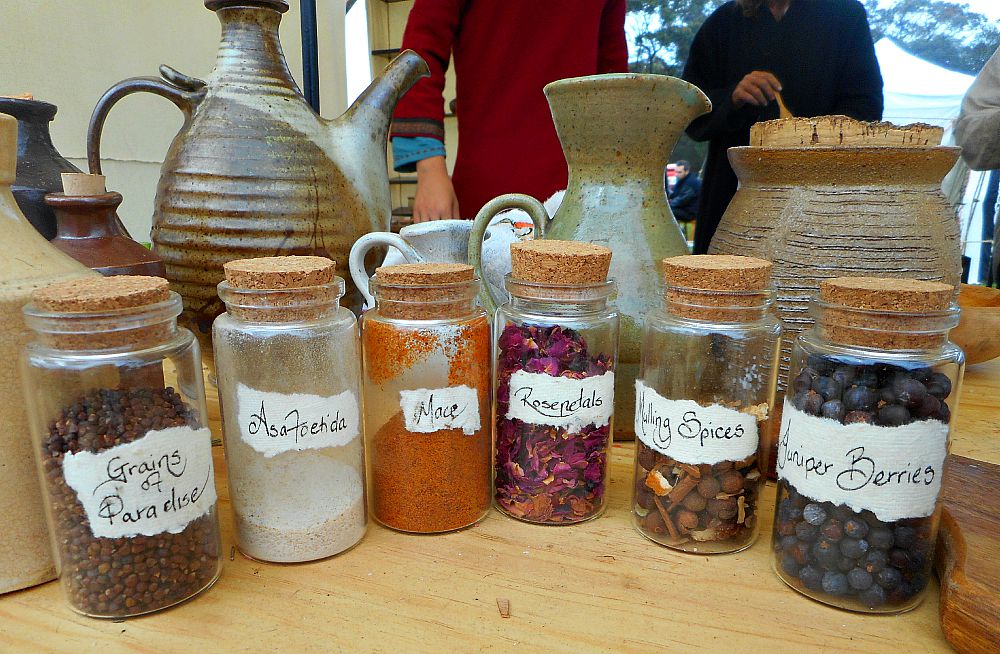
Here’s my friend Lawrence cutting up bread for a marvelous invention he made over the weekend, a medieval version of French toast.

Instead of the traditional egg, milk, and cinnamon mixture we use to dip bread in before frying, he dipped the slices in apple juice then cinnamon and toasted each piece over the fire. Oh my. Such comforting flavors and heavenly smells.
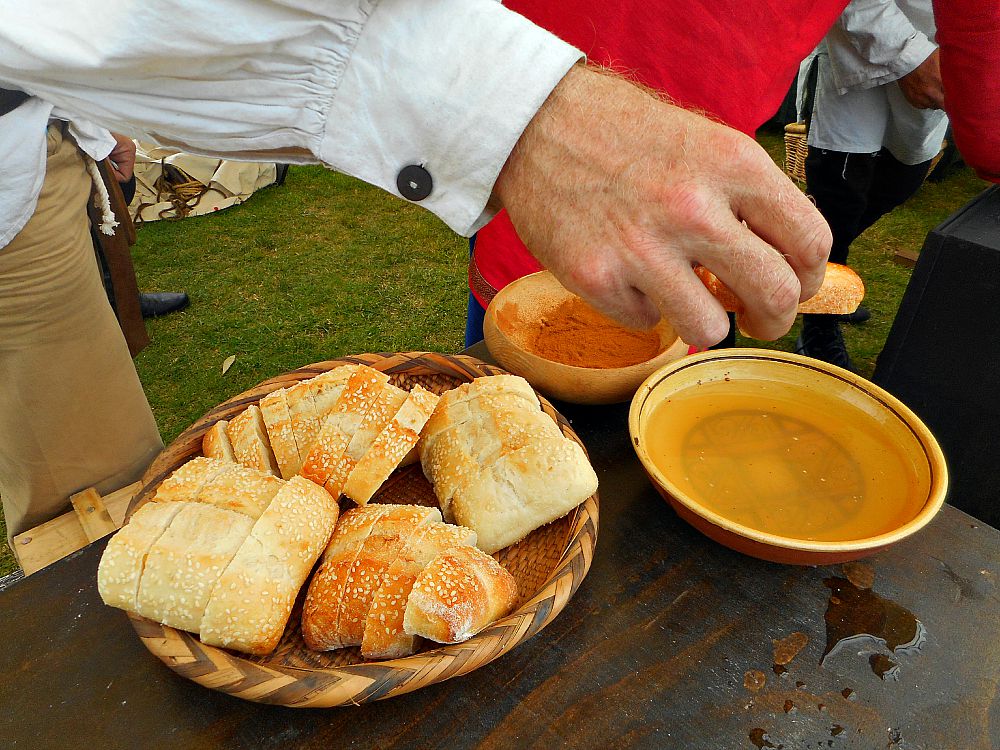
The kitchen bench was also covered with an array of bowls full of good things to snack on like fresh strawberries and salty pistachios.
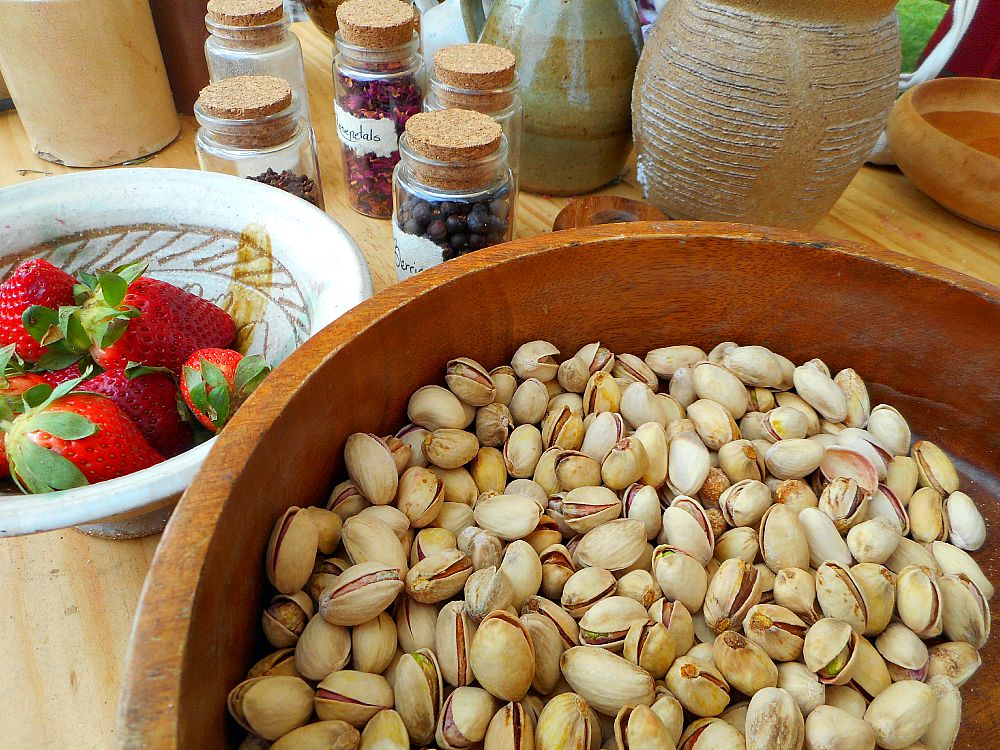
Oranges, mandarins, apples, and plump dates were also in abundance.
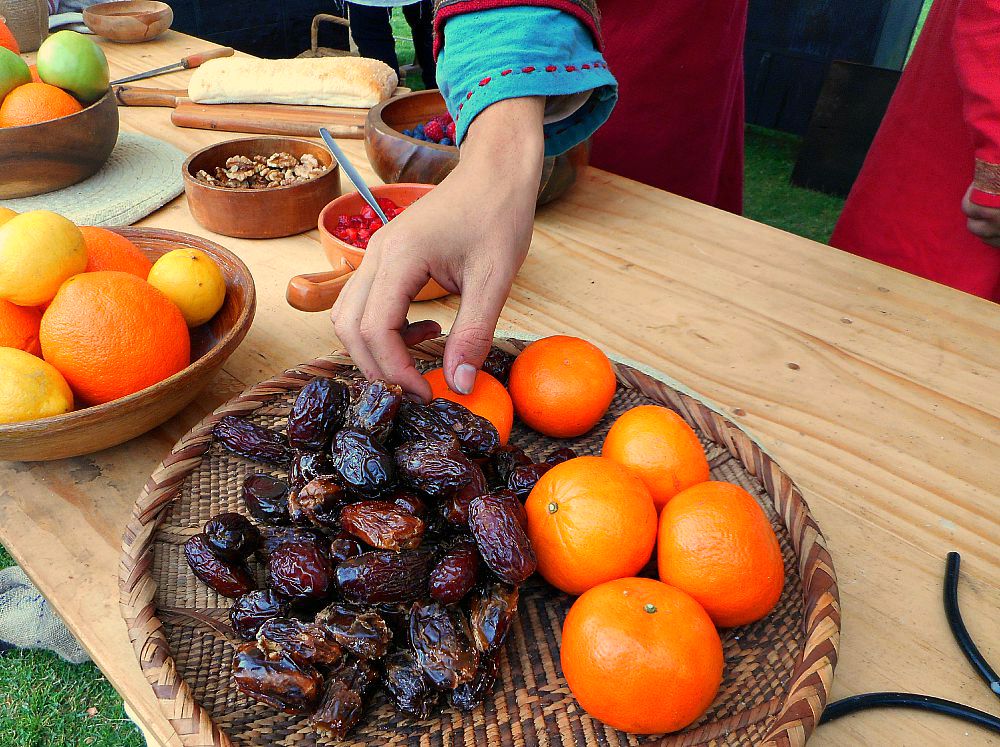
These crispy little pastries were light and crunchy, just the sort of thing you want to grab to nibble on while heading to a battle or for a bit of exploring around the markets.
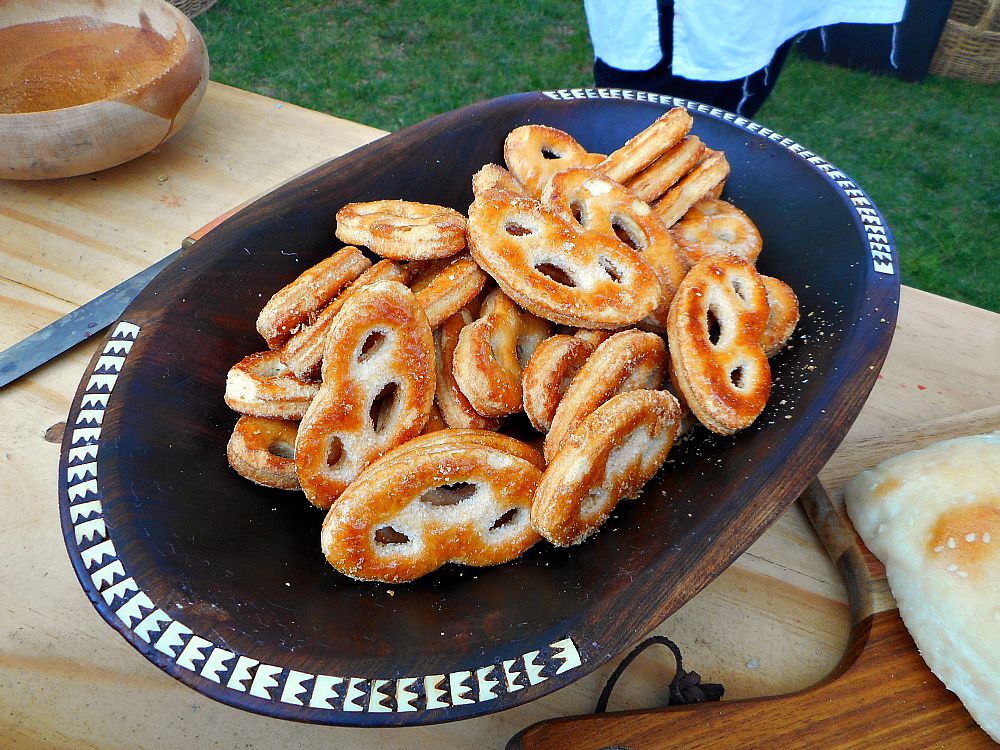
Lawrence also made a lovely strawberry sauce out of overripe strawberries. It would go beautifully over the grilled apple cinnamon French toast.
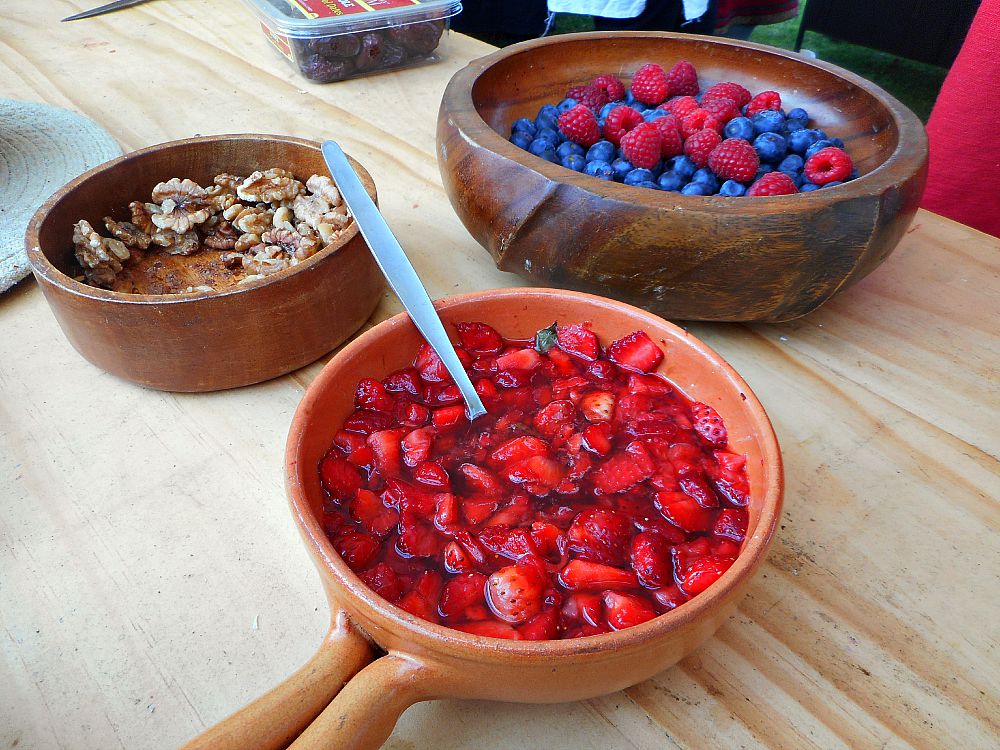
I like the look of this seeded bread in the basket. Doesn’t it make you want to tear off a piece and dunk it in herbed olive oil?
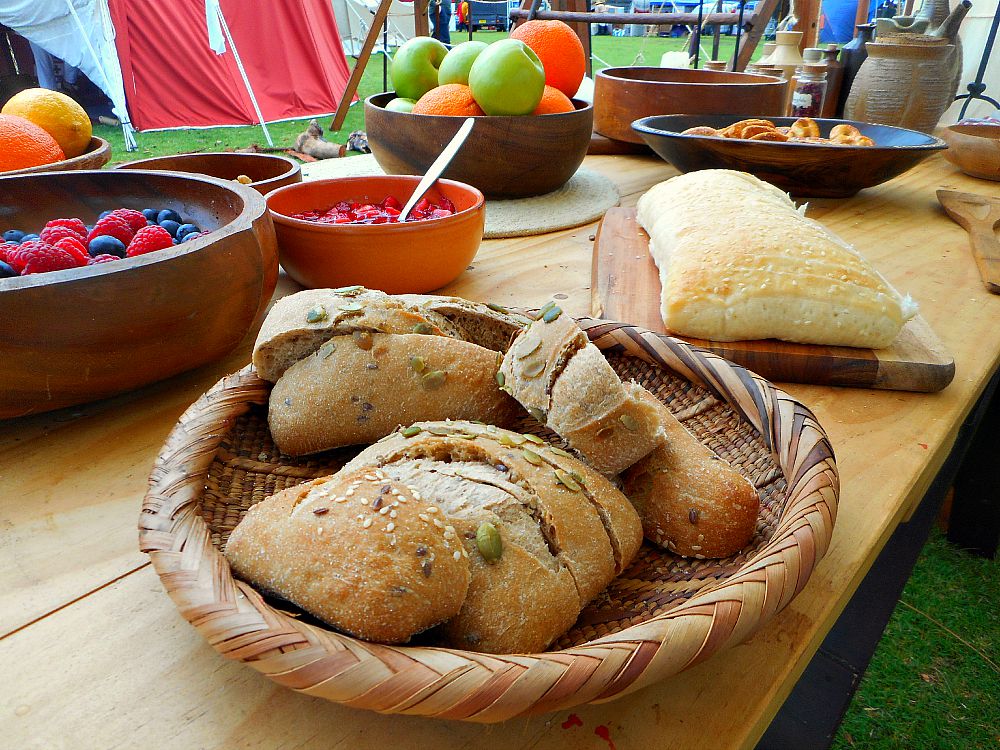
One of my favorite things the Templars make isn’t a food at all, but a drink. This gorgeous rosewater cordial flavored with fresh lemon and mint. It is truly refreshing on a hot afternoon, and so pretty to look at.
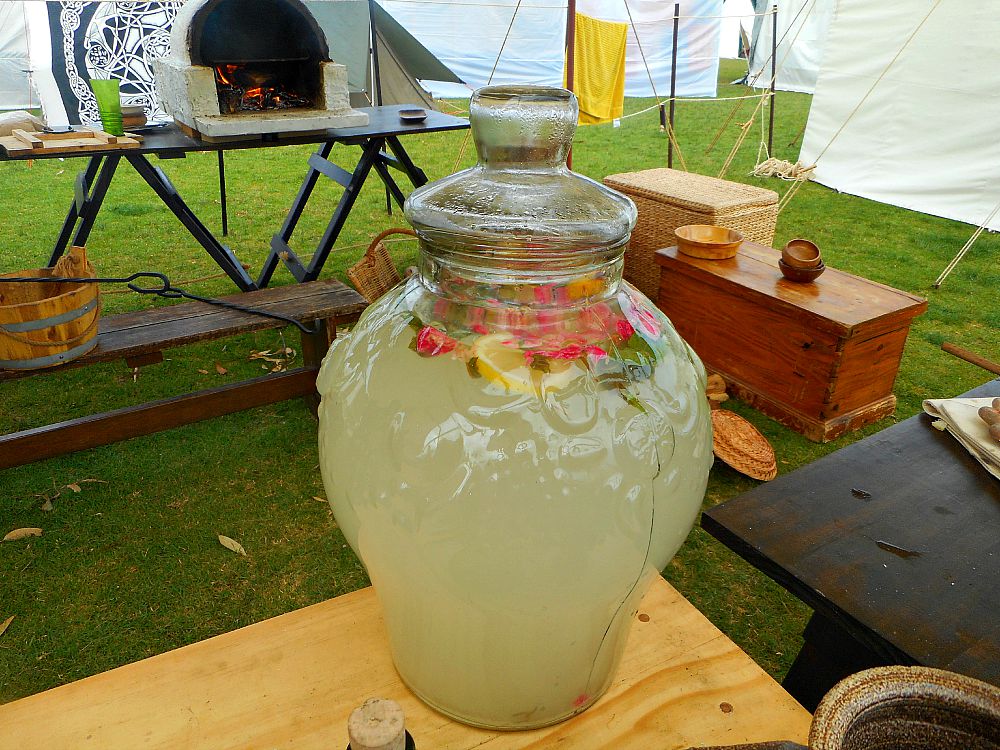
This week my friend Velva from Tomatoes on the Vine asked me to write about how I got into medieval enactment, and I’m happy to do so.
I’ve always loved history, spending innumerable hours as a girl reading encyclopedias, history books, and reference books to learn as much as I could. Reenactment wasn’t part of my world until I met my husband, Bear. I’d never known anyone who engaged in it, and really knew nothing about it. I honestly thought it was weird people dressing up in strange costumes and pretending they were someone else. How wrong I was.
Bear never pressured me to join in, just invited me to an event to see what I thought. I loved it!! These were my people, lovers of history and information, researchers and those who got in to try all the things I’d only read about. I met people who made leather shoes and Templar shields, those who dyed wool and linen with things they grew in their back yards, folks who made mead and their own ink and hand-sewed the most exquisite garments. I met bead-makers and wood-carvers, weavers and naalbinders, bone-carvers and blacksmiths.
I simply had to be part of it.
I joined the group run by my husband, Blackwolf, which is set in late 12th century/early 13th century, and started researching all sorts of cultures from that time period. My first persona was from medieval Finland and I set about making traditional 12th century Finnish clothing as I decided what I wanted to do. I thought about food, combat, clothing, and other crafts, and finally settled on medieval folk medicine. It has been a fantastic journey of learning and experimentation. I learned how to make my own medicines using herbs I now grow in my gardens. I love having things in my cupboard and fridge to alleviate stomach pains, headaches, burns, and cuts. That led to my writing a book of medieval remedies earlier this year. (Click here for a preview.) Making my own remedies is an extension of my desire to be as self-sufficient as possible.
The last few months I’ve been working towards a Bedouin persona, delving into the history of medieval Bedouin food, medicine, and culture. I’m working on new garb and adding Bedouin herbs and spices to my stock cupboard. It’s marvelously fun and interesting.
Now, however, I must get back to modern life and start a load of laundry, finish up the ham and cheese muffins I’m making, and tackle some paperwork.
What are you working on today? xo

by Krista | Sep 16, 2015 | Spring
We had a gorgeous storm tonight that brought us some much-needed rain. Even though it wasn’t a lot, we are thrilled and thankful.
Bear and I have been working flat strap the last few days getting ready to head to St. Ives (near Sydney) for the St. Ives Medieval Faire. It’s a new event for us and we’re delighted to experience medieval camping in a new way. Instead of going as our usual Blackwolf Bedouin encampment, we’re joining the Templars as a pilgrim (me) and combatants (Bear and our friend, Adam).

As much as I love our encampment, and I really, really do, I’m excited to see how the Templars live, camp, and eat. We’ve been getting to know them over the last few months and they’re such a hilarious and jolly bunch.
I’m wearing new garb for this event too. Gone is my Finnish dress and in its place is the garb of a woman on pilgrimage to the Holy Land. I must say it’s rather fun to embody a new persona, if only for a weekend, and I look forward to grilling our Templar friends to learn more about what life would have been like for “me” during the Crusades.
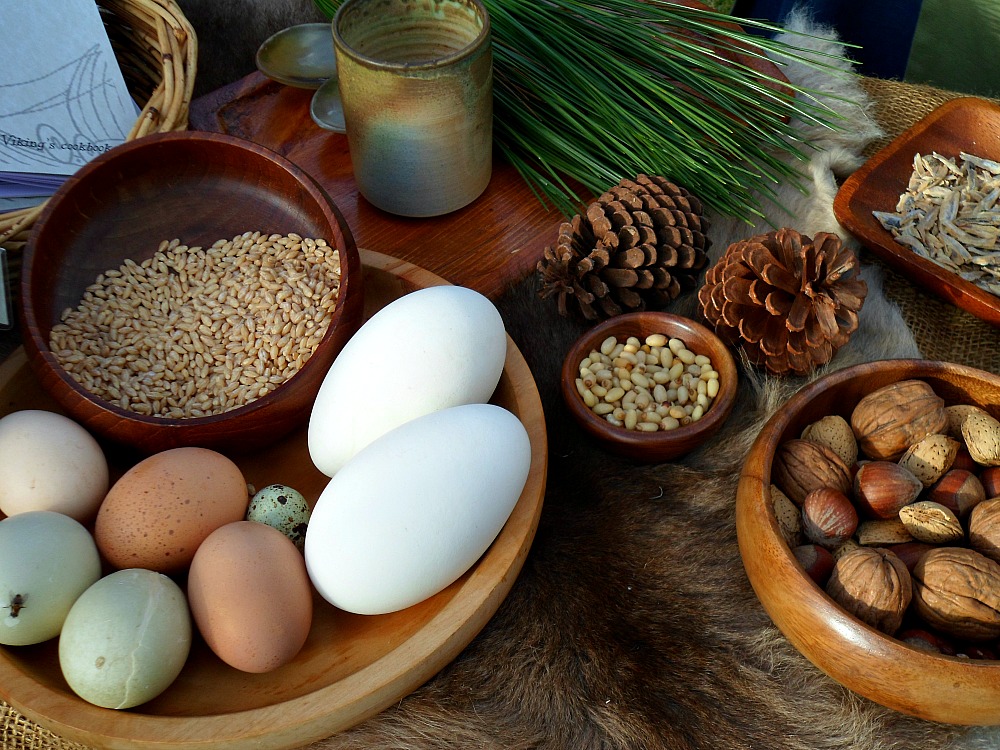
In order to go adventuring for four days, Bear and I have been working hard to get the gardens and orchards watered and mulched, and all the feed, water, and shade ready for our animals so our lovely caretakers don’t have anything to worry about. They do such a good job keeping an eye on our house, property, and animals while we’re gone, and we like to make things as easy as possible for them.
I’m sure looking forward to this getaway with both new and old friends.
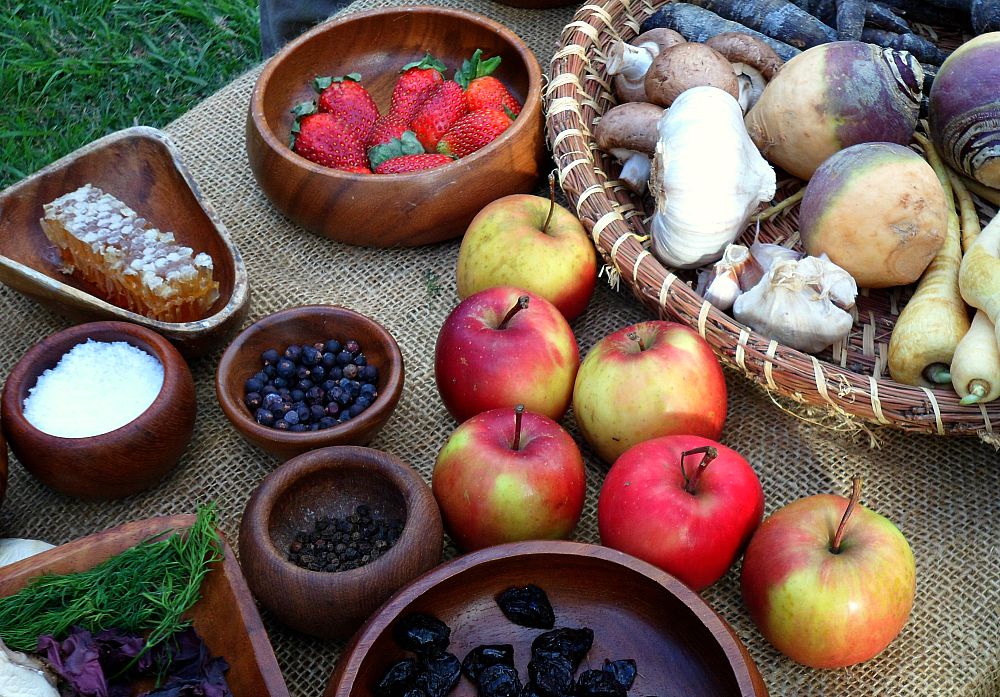
Now it’s time to finish packing and get all the food together. I’ve got homemade oatmeal raisin cookies, dried apples, dates, nuts, seeds, bread rolls, double-smoked ham, Croatian salami, and frozen bottles of our fresh-pressed apple juice. I think we’re almost ready.
Hope you have a fantastic weekend! xo

by Krista | Aug 31, 2015 | Winter
Saturday morning Bear and I were up at 4 a.m. to pack the car, dress in medieval clothes, and head to Fort Lytton for a day with friends representing the 12th century.
Normally during medieval events, we are busy from morn until night doing demonstrations and talking with the public, but this one was laid back and relaxed and so much fun. We actually had time to hang out with each other, and that was brilliant.
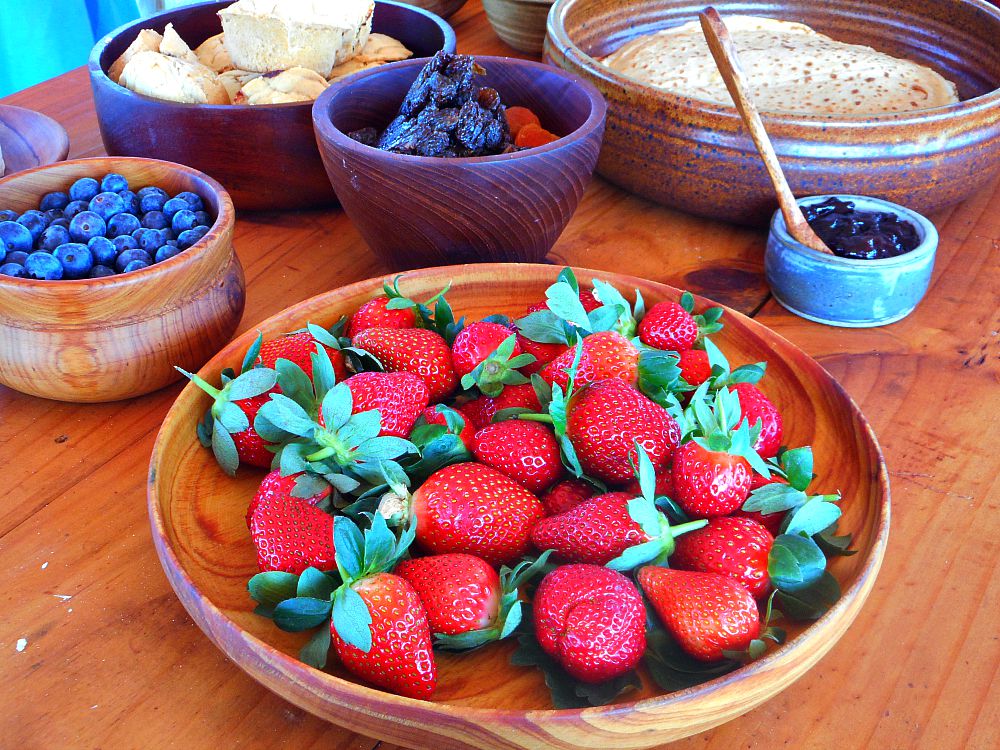
We got to wander into each other’s tents and see the variations of food, craft, and furniture used by different groups representing different cultures. I was delighted by these rustic little apple hand pies.
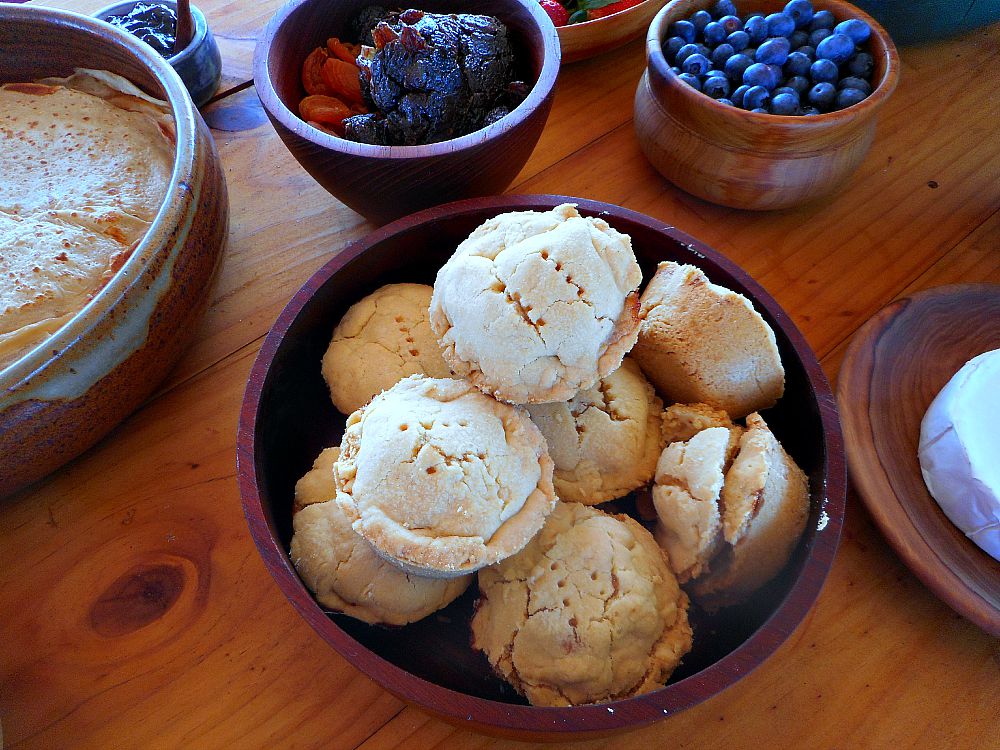
And who can resist hummus, salted nuts, smoked hams and sausages, dried fruits, lovely cheeses, and those oh so gorgeous strawberries? Medieval food provides mighty good eating indeed.
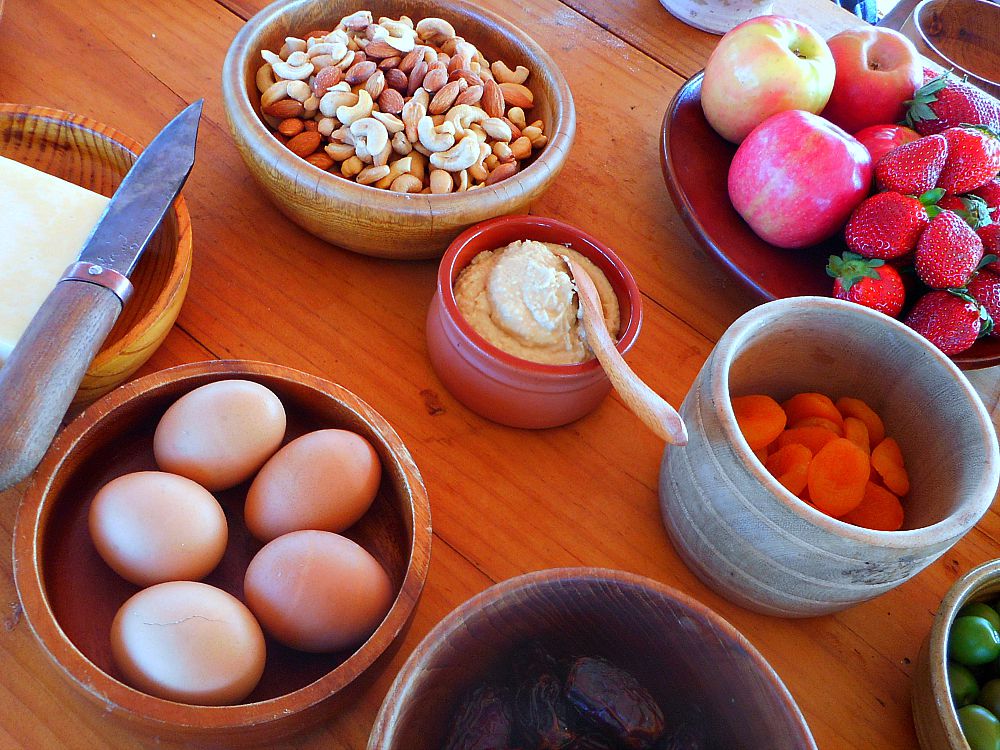
I also liked looking at all the unique crafts practiced by each group. My friend does the most beautiful naalbinding, a precursor to knitting, churning out cozy mittens, socks, slippers, and cord. Her hubby makes handmade leather shoes that are gorgeous.
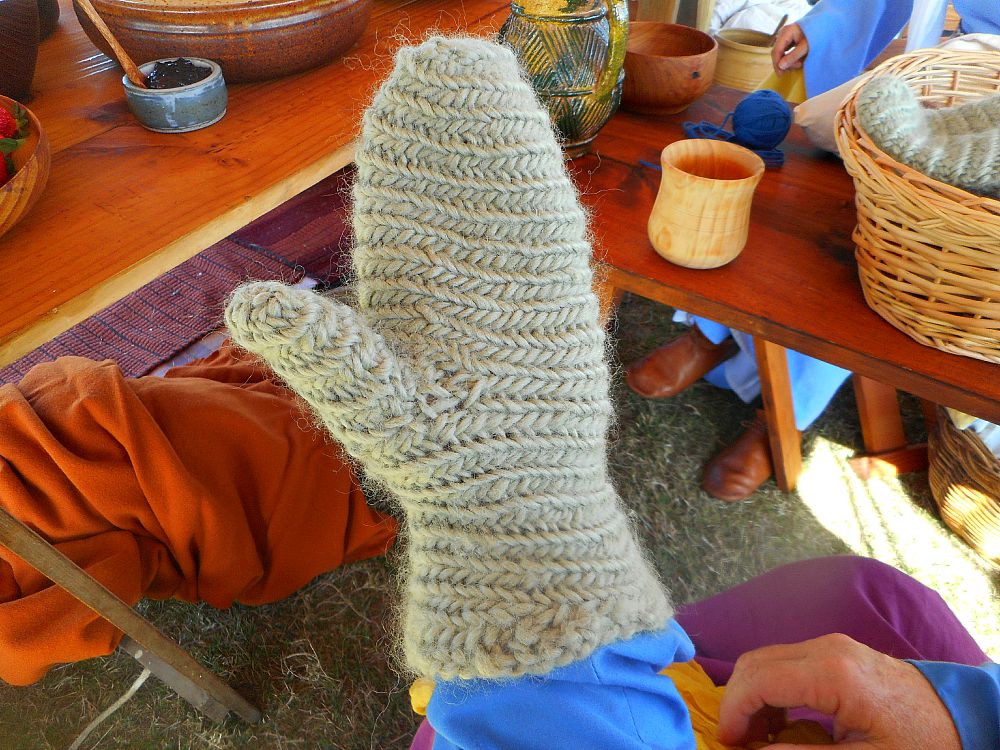
My friend Sue and I spent several hours making brightly colored Bedouin tassels for our Bedouin tent, camel saddles, and robes. It was so fun to sit in the shade of the tent, visiting with old and new friends as we worked.
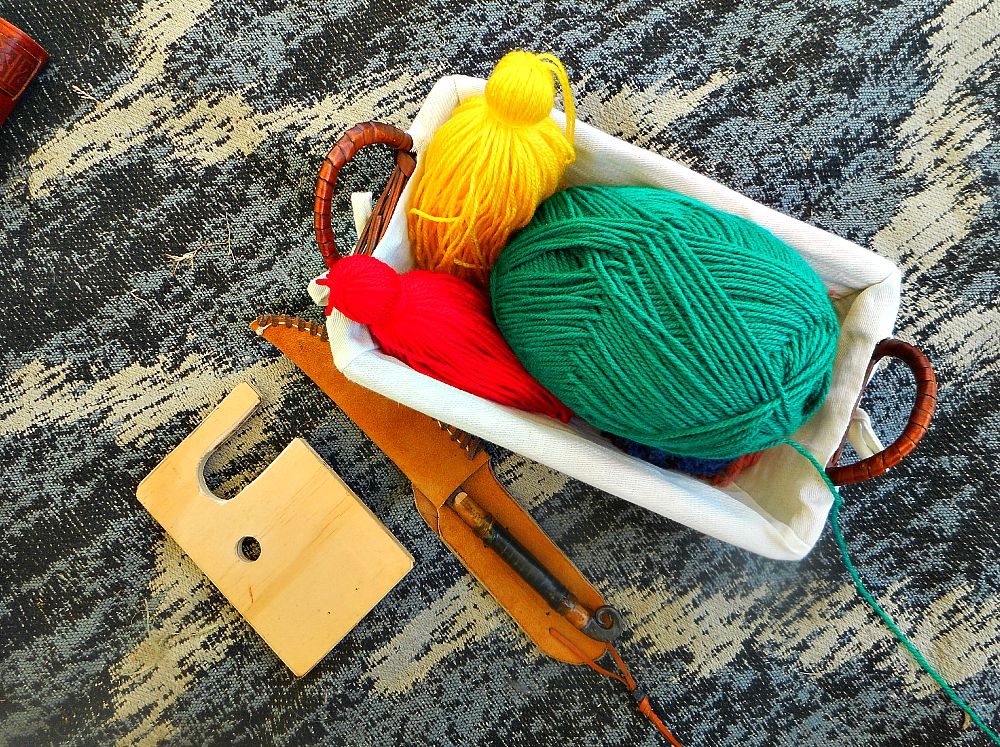
Since it was such a small event, our Templar friends told us to not worry about bringing all our gear, and instead shared their tent with us. It was so great to get to spend time together, telling stories and jokes, swapping tales about past events, and sharing our latest bits of medieval research and discovery.
I especially loved learning about the history of the Templars, their role in the Crusades, and the diverse assemblage of pilgrims from around the known world who accompanied them to the Holy Land.
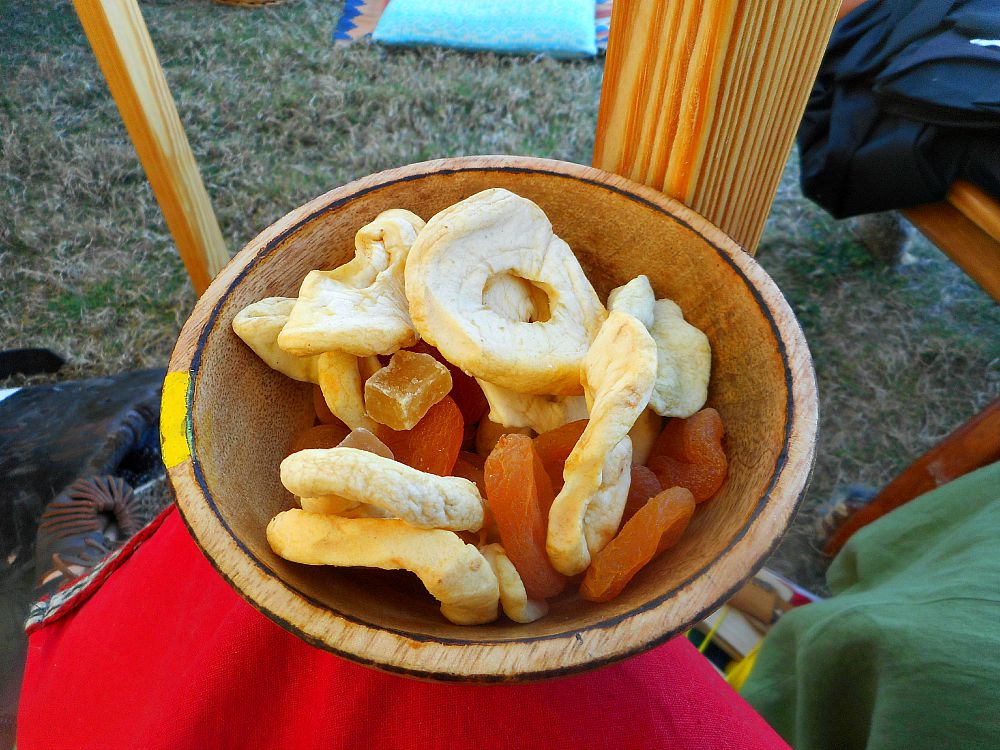
My favorite bit was hanging out with such a great group of people, doing something we love with others who love it too.

Bear and I returned home exhausted but inspired, full of ideas for projects and improvements and additions to our camp. With our next event less than a month away, we have a lot of fun work to do.
What is your favorite memory from your weekend? xo

by Krista | Jul 8, 2015 | Winter
Medieval medicines are made, bags packed, trailers loaded and tied down. Our car is full to bursting with medieval weapons and furniture, food and boxes, and we are finally ready to head to Abbey Medieval Festival.
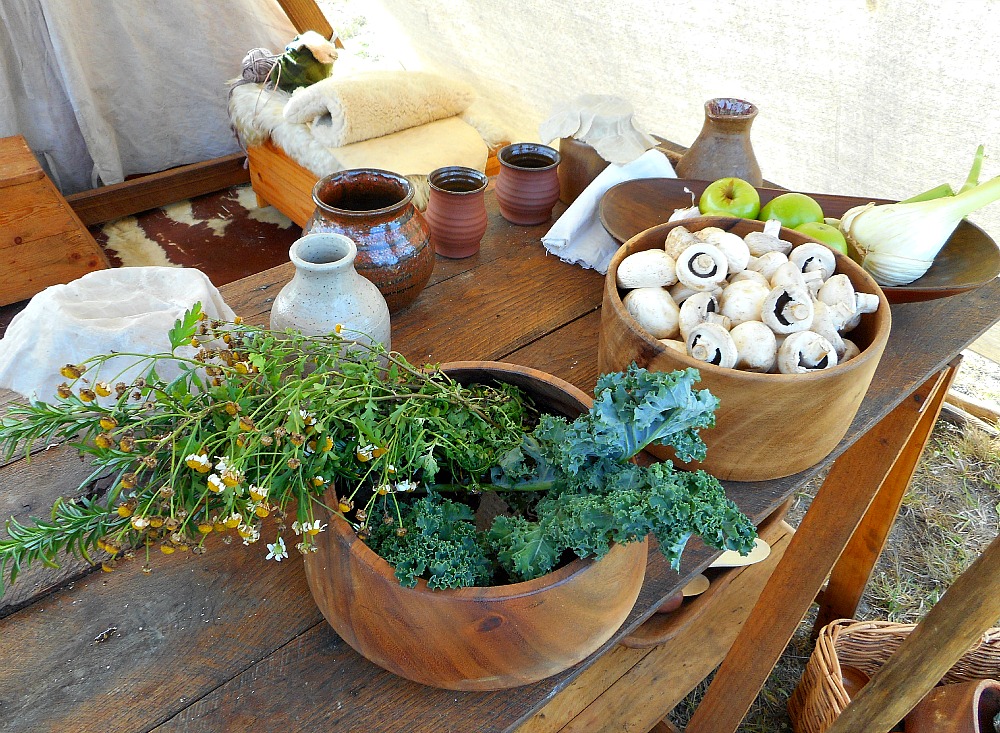
It’s the event we look forward to most all year. The one where all of our medieval friends gather for 5 days of camping, cooking over fires, sharing our passion for history with the public, and, the best part of all, jolly good visits over cups of mead and spiced wine.
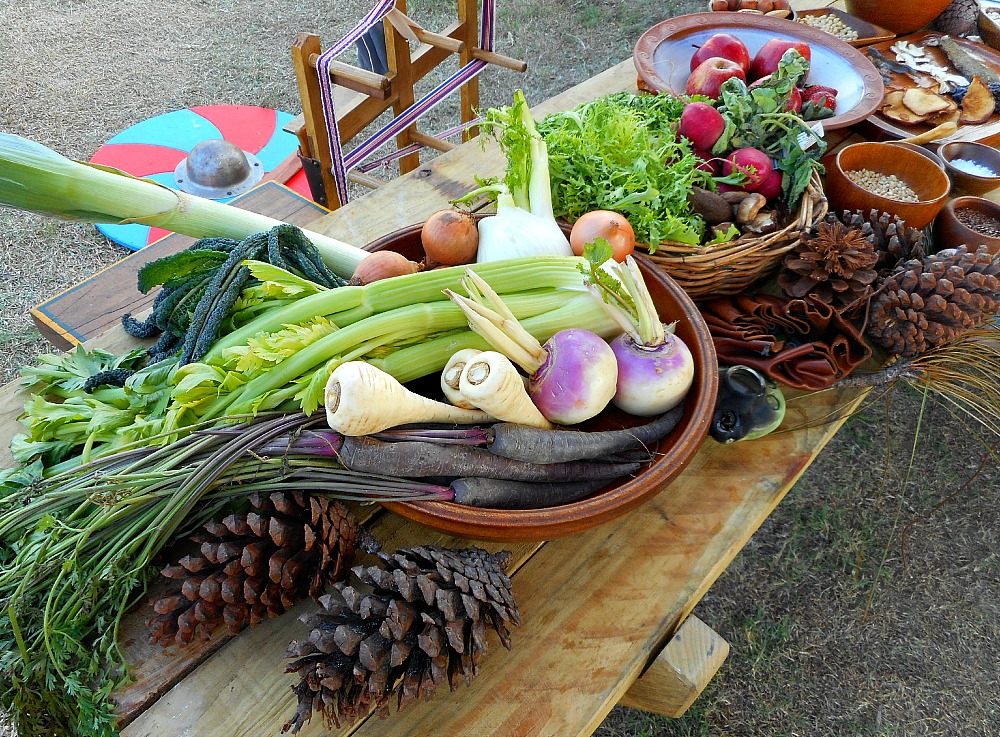
Leaving the farm for 5 days is no easy feat, but we’ve been working hard to make sure all the animals have plenty of food and water, and we have wonderful caretakers who keep an eye on things to make sure the farm and animals are safe.
As much as Bear and I love our farm, it is pretty darn exciting to think about five whole days without any farm work at all. Yep, we’re just a wee bit excited.
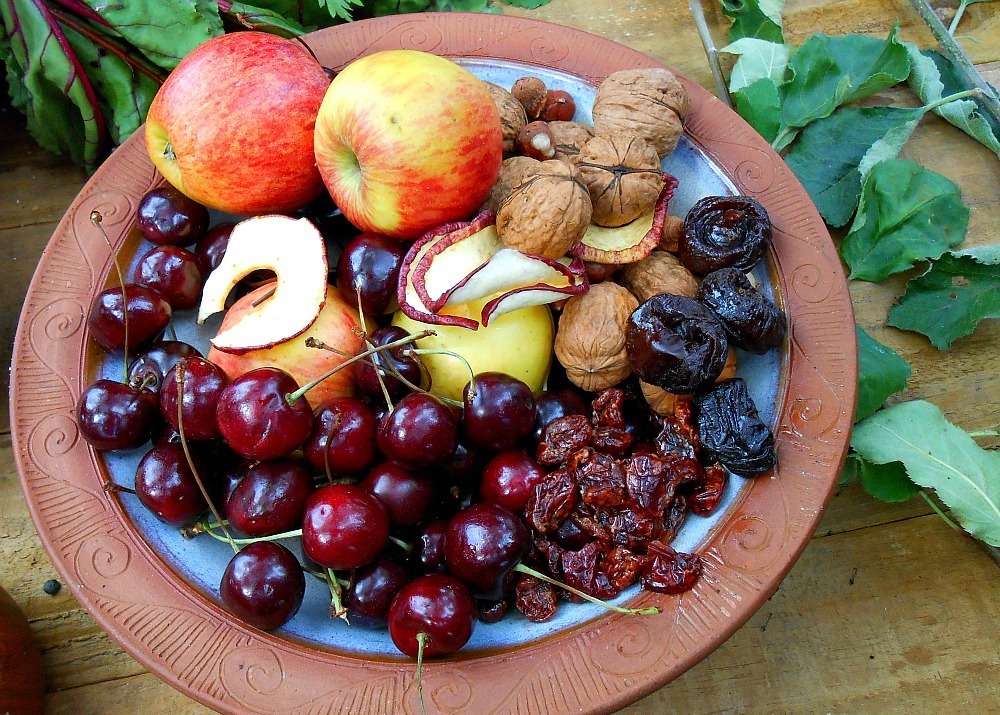
Now I’m off to bed to catch a few hours sleep before our 4 a.m. wake-up. Then we will have hot showers, bid farewell to our caretakers, and set off to Caboolture for our grand medieval adventure.
What are you looking forward to most this week? xo

by Krista | Jun 13, 2014 | Winter
One of my favorite things about medieval encampments is wandering around the various camps to see what they ate during their time in history and their part of the world.
I was amazed to learn that there were no potatoes, tomatoes, or peppers in Europe during medieval times. In spite of this lack of modern staples, food was varied and delicious with oodles of nuts, fruit, vegetables, herbs, and spices.
 It always gives me an urge to go foraging and collect baskets full of mushrooms (which I don’t even like!), hazelnuts, berries, and great sprays of elderflower, feverfew, and dillweed.
It always gives me an urge to go foraging and collect baskets full of mushrooms (which I don’t even like!), hazelnuts, berries, and great sprays of elderflower, feverfew, and dillweed.
 In our medieval Bedouin camp we do hot breakfasts and a hot dinner of roasted meat and savory veg. But for lunch we stick to cold foods that are easy to lay out and scrumptious whether you eat right away or drift in after medieval combat or a riveting discussion on ancient fever treatments.
In our medieval Bedouin camp we do hot breakfasts and a hot dinner of roasted meat and savory veg. But for lunch we stick to cold foods that are easy to lay out and scrumptious whether you eat right away or drift in after medieval combat or a riveting discussion on ancient fever treatments.
We start with pickled onions and an array of olives.
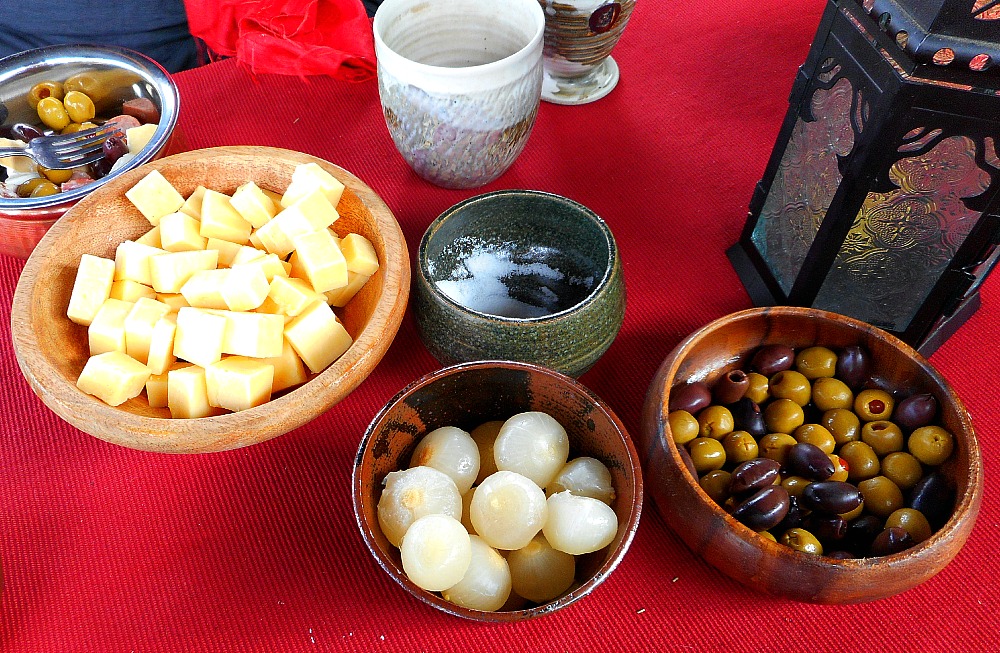 Our lunches just wouldn’t be the same without Ann’s cheeses that she makes in camp: crumbling, mild cottage cheese…
Our lunches just wouldn’t be the same without Ann’s cheeses that she makes in camp: crumbling, mild cottage cheese…
 …and cool, creamy labneh. They both go beautifully with salty olives or darkly sweet prunes, figs, and dates.
…and cool, creamy labneh. They both go beautifully with salty olives or darkly sweet prunes, figs, and dates.
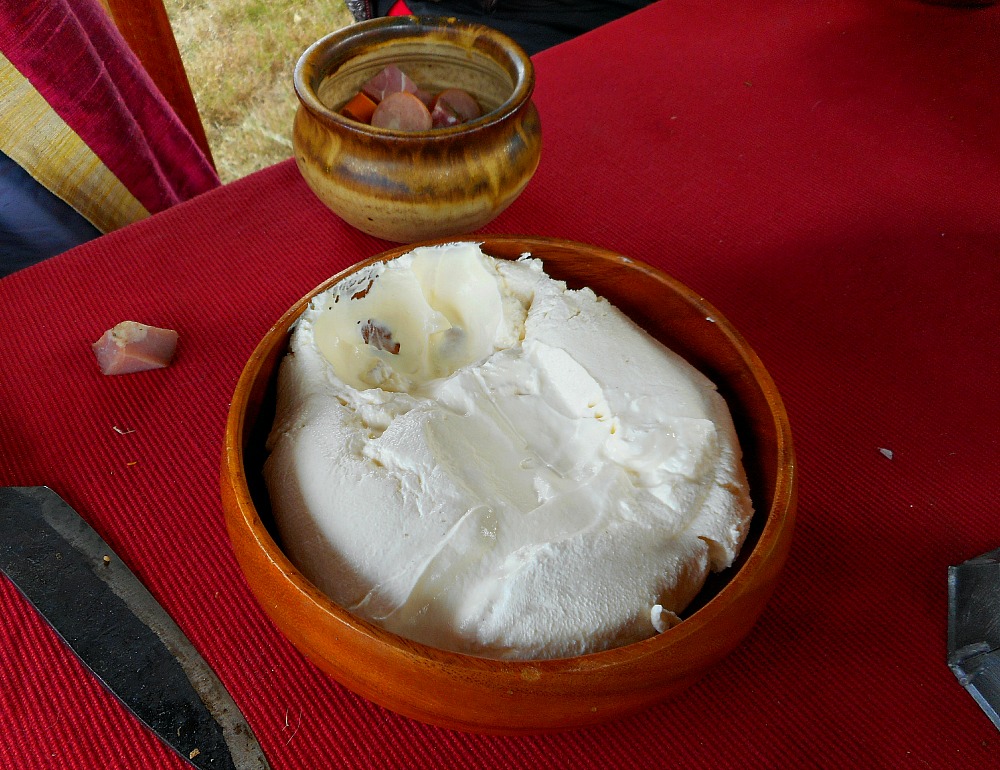 If we have time to make them, we bring our own homemade sausages mixed with Hungarian paprika and lashings of fresh garlic. Otherwise we turn to the butcher for an assortment of delicious cold meats.
If we have time to make them, we bring our own homemade sausages mixed with Hungarian paprika and lashings of fresh garlic. Otherwise we turn to the butcher for an assortment of delicious cold meats.
 Along with the savory bites we have baskets of Turkish flat bread and bowls of all sorts of nibbles: almonds and walnuts, dried apples, almond-stuffed dates, and honey-soaked figs.
Along with the savory bites we have baskets of Turkish flat bread and bowls of all sorts of nibbles: almonds and walnuts, dried apples, almond-stuffed dates, and honey-soaked figs.
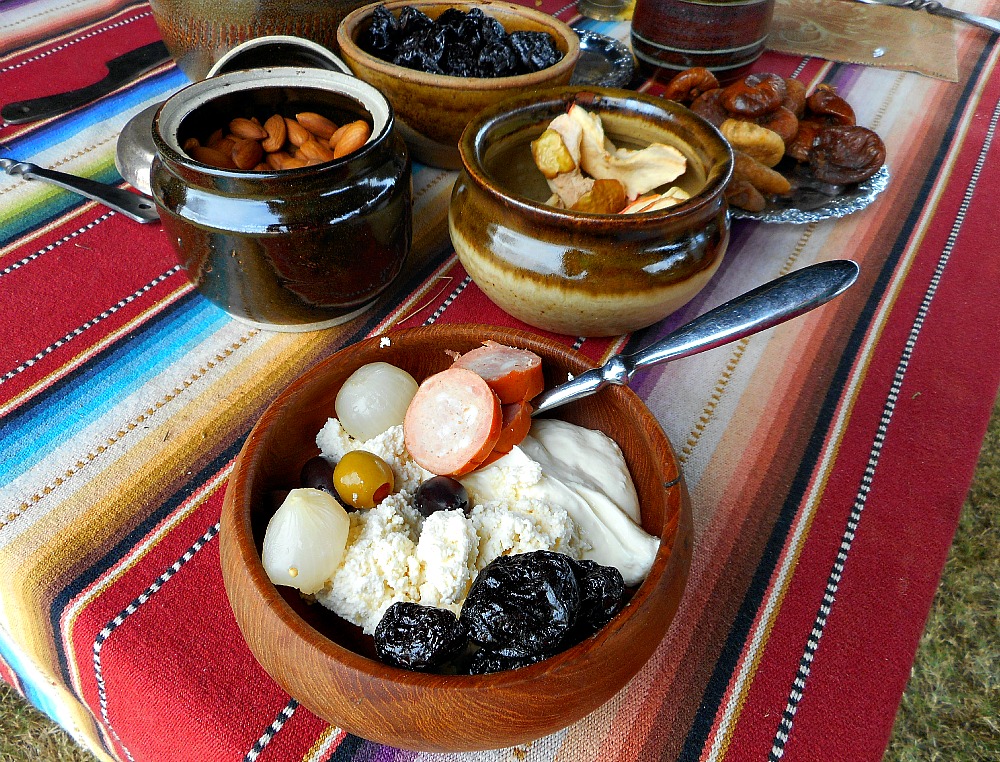 Needless to say, we never go hungry.
Needless to say, we never go hungry.
What is your favorite easy, cold lunch? xo


































